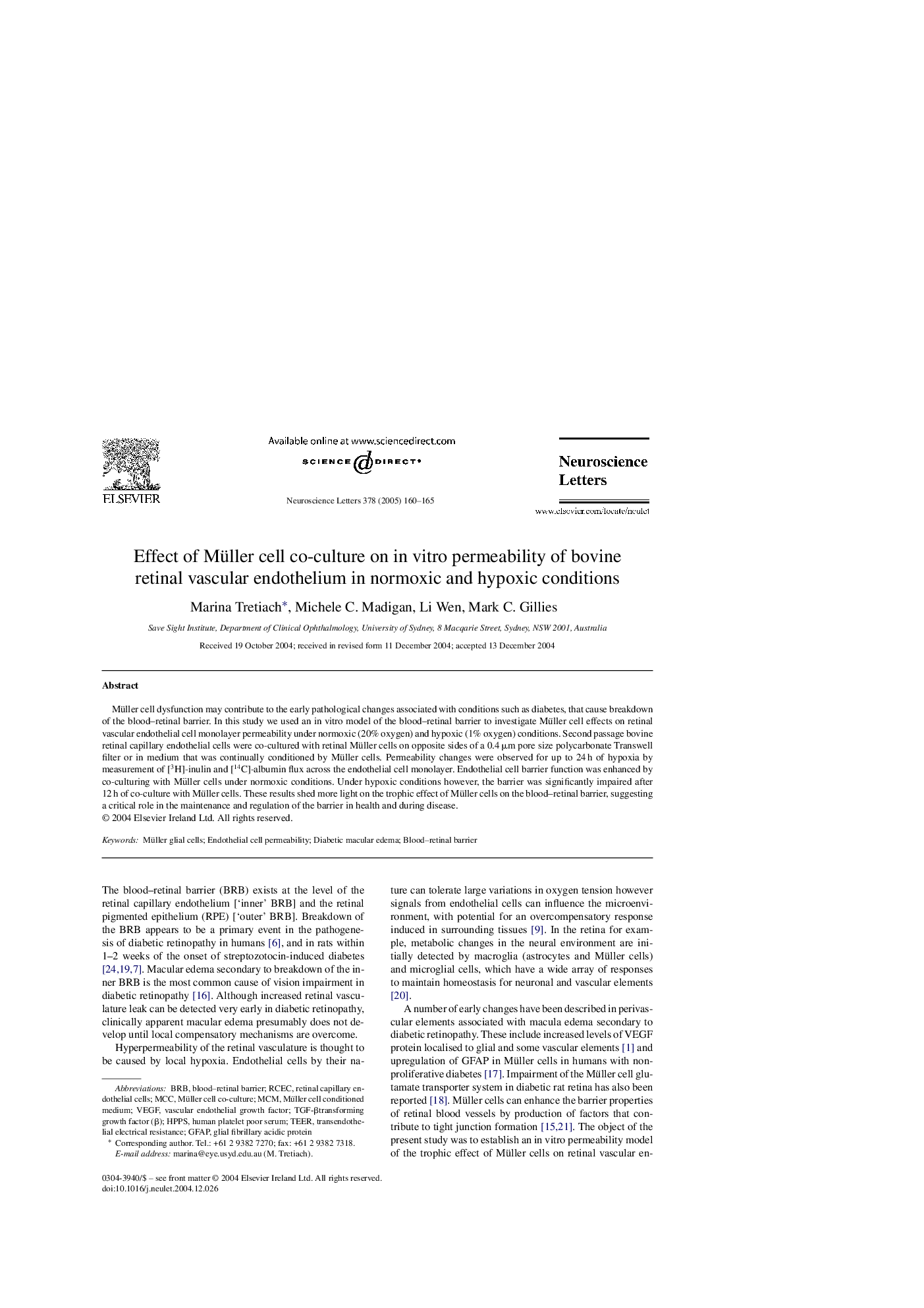| Article ID | Journal | Published Year | Pages | File Type |
|---|---|---|---|---|
| 9429271 | Neuroscience Letters | 2005 | 6 Pages |
Abstract
Müller cell dysfunction may contribute to the early pathological changes associated with conditions such as diabetes, that cause breakdown of the blood-retinal barrier. In this study we used an in vitro model of the blood-retinal barrier to investigate Müller cell effects on retinal vascular endothelial cell monolayer permeability under normoxic (20% oxygen) and hypoxic (1% oxygen) conditions. Second passage bovine retinal capillary endothelial cells were co-cultured with retinal Müller cells on opposite sides of a 0.4 μm pore size polycarbonate Transwell filter or in medium that was continually conditioned by Müller cells. Permeability changes were observed for up to 24 h of hypoxia by measurement of [3H]-inulin and [14C]-albumin flux across the endothelial cell monolayer. Endothelial cell barrier function was enhanced by co-culturing with Müller cells under normoxic conditions. Under hypoxic conditions however, the barrier was significantly impaired after 12 h of co-culture with Müller cells. These results shed more light on the trophic effect of Müller cells on the blood-retinal barrier, suggesting a critical role in the maintenance and regulation of the barrier in health and during disease.
Keywords
Related Topics
Life Sciences
Neuroscience
Neuroscience (General)
Authors
Marina Tretiach, Michele C. Madigan, Li Wen, Mark C. Gillies,
